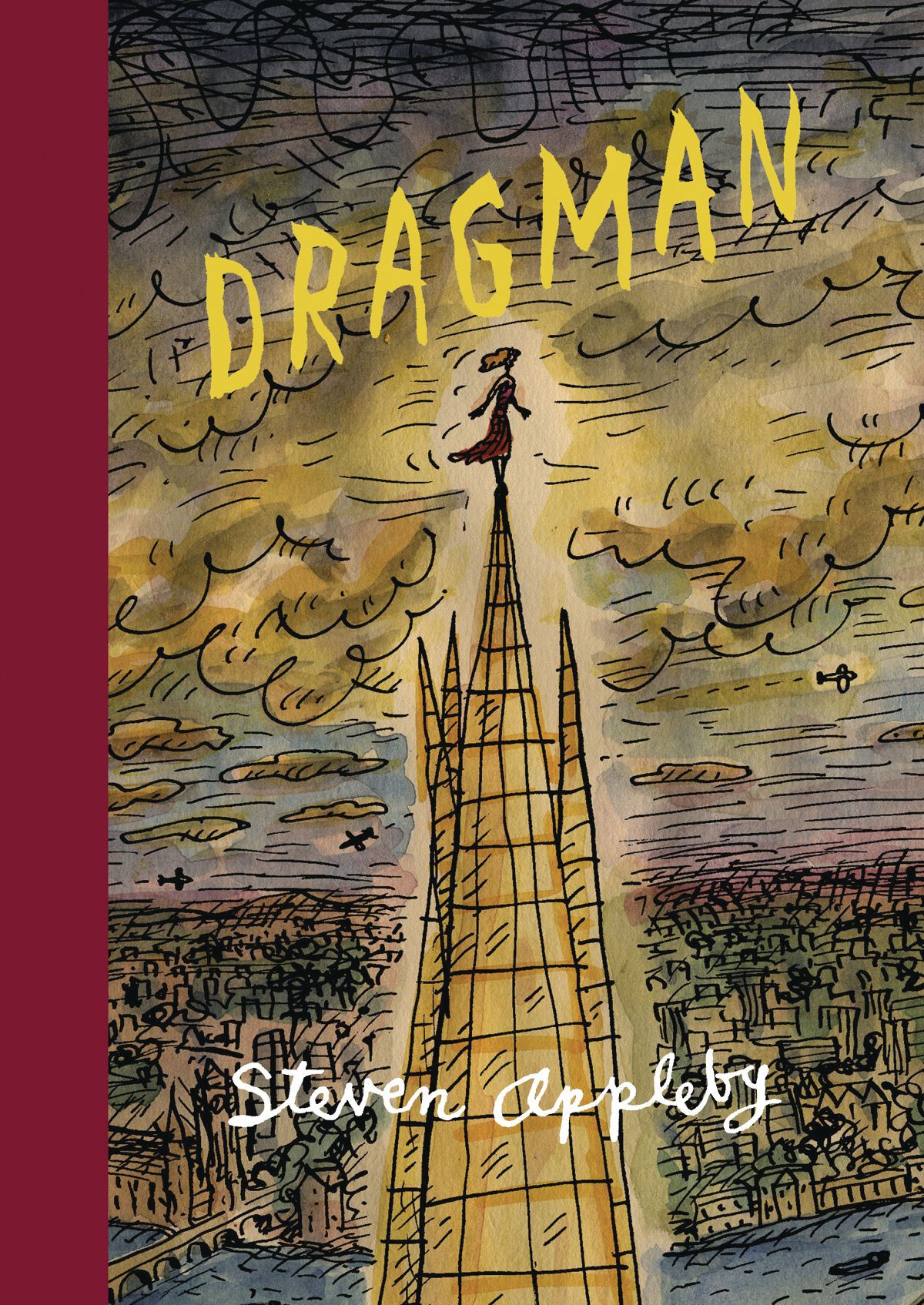Dragman Explores the Complexities of Gender & Power
- WRITER
- Steven Appleby
- Artist
- Steven Appleby
- Letterer
- Steven Appleby
- Cover Artist
- Stephen Appleby
- Publisher
- Metropolitan Books
- Price
- 28.00
- Release Date
- 2020-04-08
- Colorist
- Nicola Sherring, Steven Appleby
When August Crimp wears women's clothes, he gains the ability to fly. In his world, superheroes are common enough that citizens are expected to carry superhero insurance in the event they ever need to be rescued during a crisis. Doing superhero work without a license is highly illegal, but the superhero society has strict rules about clothing-based powers: They aren't permitted, because they're too unpredictable and dangerous. August's brief stint as Dragman thereby ends after he's denied license and he packs up his clothes and tries to lead a normal life.
Unfortunately, it doesn't work. Steven Appleby's Dragman picks up a few years after August abandons his superhero identity to find him married with a child. Big corporations have begun purchasing people's souls at a premium and the soulless are different -- meaner and more apathetic, less concerned with forging human connection. When August's young neighbor asks for his help retrieving her parents' souls, he says yes and teams up once again with his old companion Dog Girl. Their investigation uncovers a big conspiracy headed by one of their own, as they race against the clock to save everyone.
Dragman is a complex exploration of gender and power. Partially based on Appleby's own gender journey, the story deals with identity and presentation, intimate relationships and secrecy, as well as devastating violence against transwomen. In addition to August being harassed for his gender presentation (he uses he/him pronouns throughout the book, though he does eventually come to identify as trans), part of the story is predicated on a man who preys upon and murders transwomen.
Dragman is heavy and there are upsetting descriptions, as well as terminology that may not sit well with readers. In addition to transphobic language, the protagonist also uses the word "tranvestite" to describe himself, which is often used as a slur. However, the overall trajectory of the story is hopeful and Appleby's personal connection to the protagonist runs deep. The afterword provides much-needed context, even though the graphic novel is fictional.
August's story is illustrated in beautiful, watercolor art with handwritten letters. Flashbacks are presented in muted blues and the present is presented in full-color. In addition to Appleby's own color work, Nicola Sherring's watercolors are incredible. Each chapter of August's narrative is broken up with brief bits of prose, which introduce the second point of view for the book. These pieces of writing, though well-rendered and atmospheric, contain some of the most distressing parts of the story and, to be frank, likely could have been left out without affecting the overall message of the book. That said, the villain presented in prose is irredeemable, which is refreshing. Too often, villains -- especially villains whose violence is based in bigotry -- are given redemption arcs that seek to erase their horrendous acts. That doesn't happen in Dragman, which is a relief.
Furthermore, August's power increases as he grows more comfortable with himself and his gender, while those who seek to hurt him and to hurt transwomen see a significant decrease in their power and influence. Dragman raises up marginalized characters and gives the right people happy endings, while exploring how "happily ever after" can and should look different depending on a person's needs and desires. It's worth a read, though interested parties should proceed with caution given the sensitive nature of some of the book's material.

